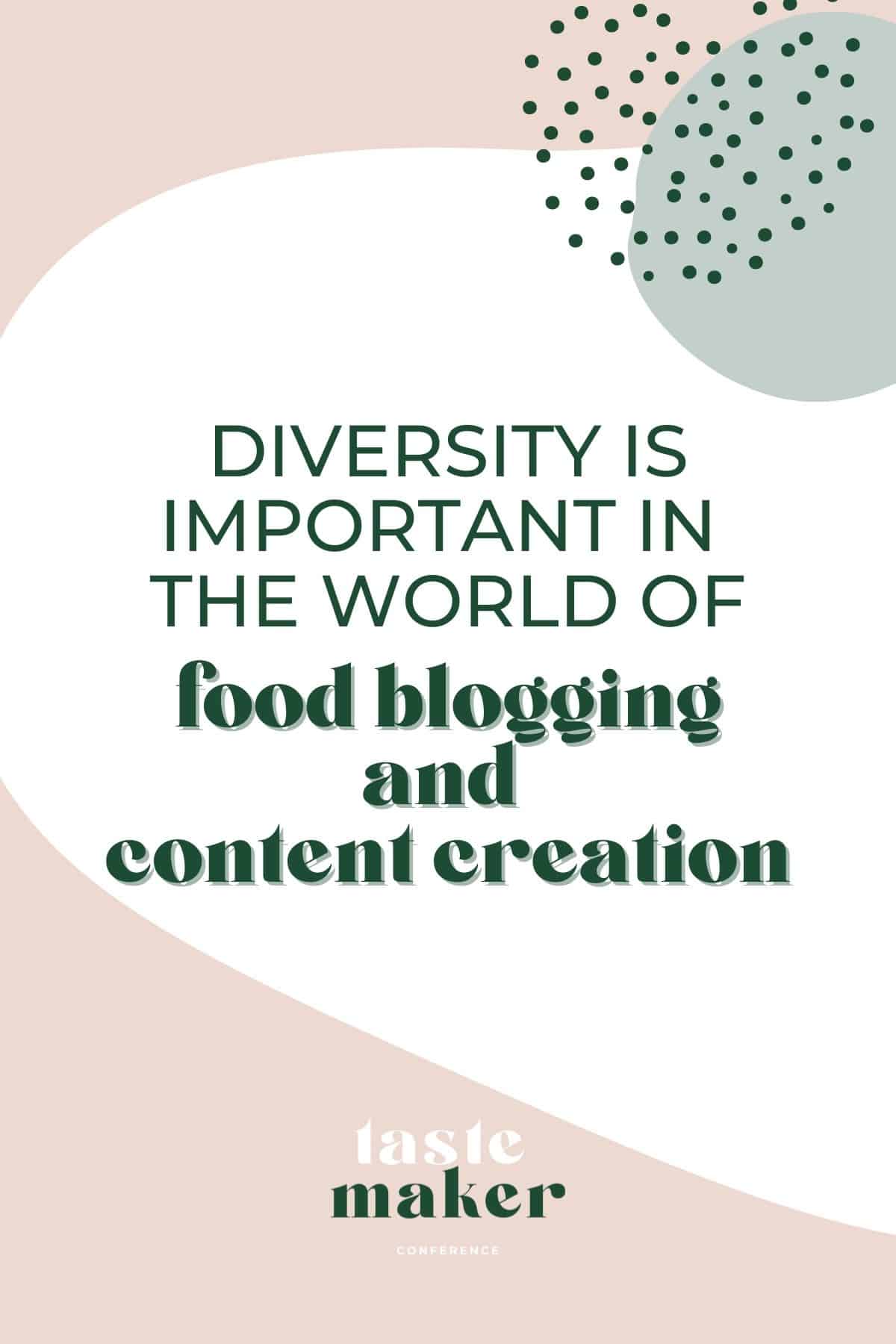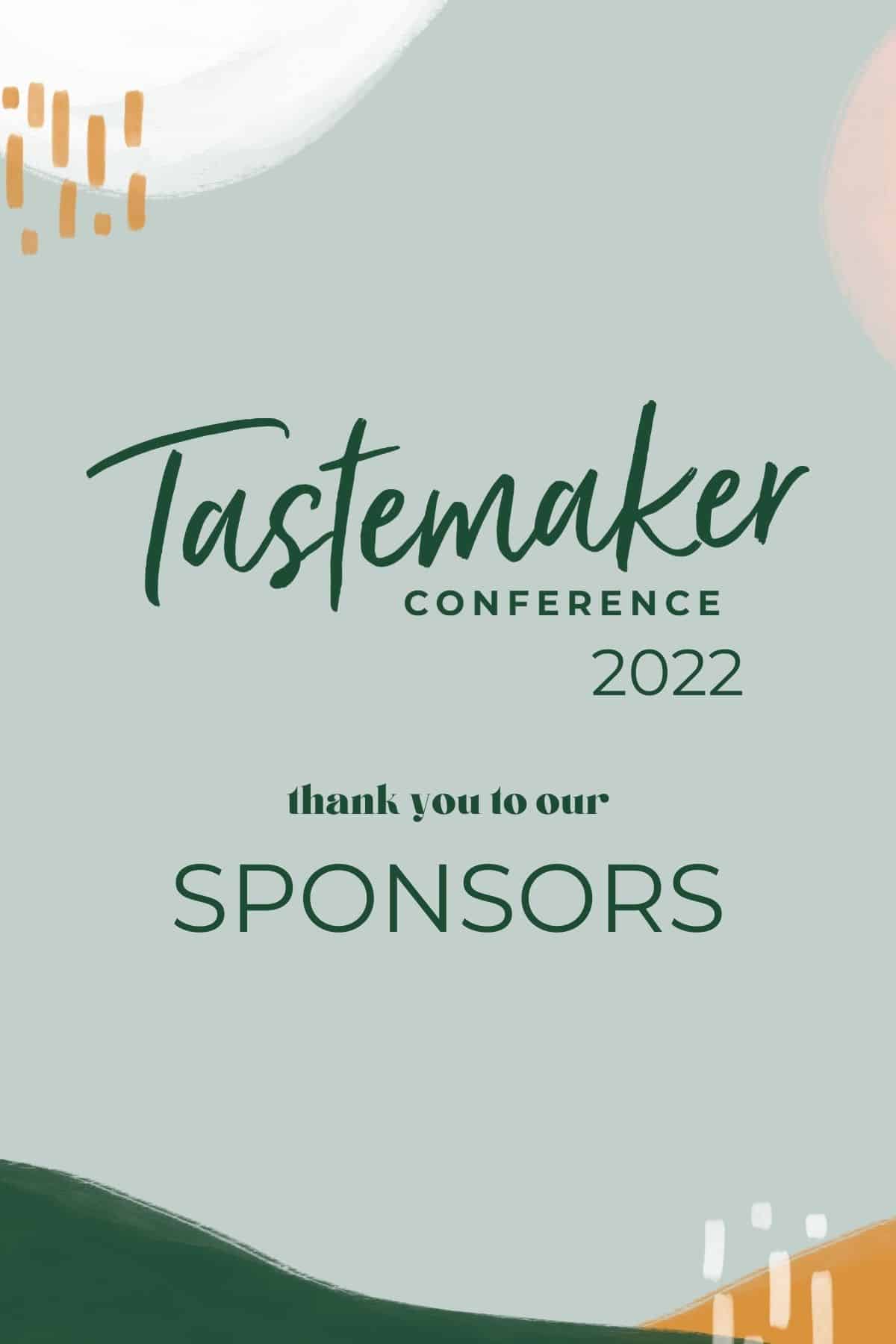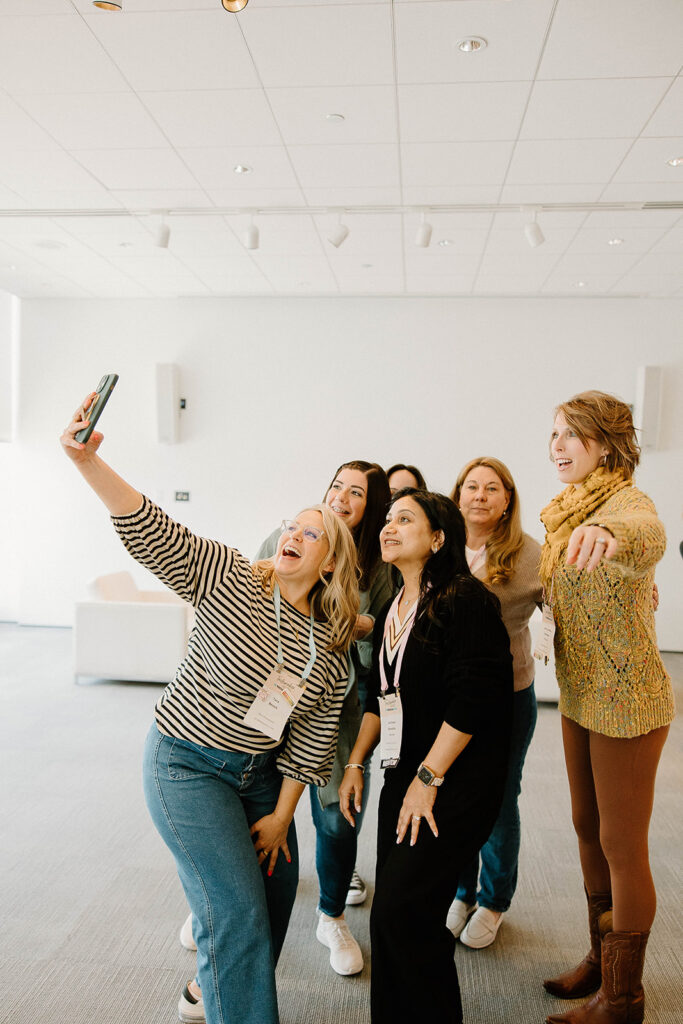Watch the Live Presentation and Q&A with Jazzmine Woodard of Dash of Jazz and Eat the Culture to go over all your questions as a content creator about how to build diverse partnerships as a brand and creators.
Also, if you’re interested in learning more about this topic, be sure to check out our blog post: Diversity is Important in the World of Food Blogging and Content Creation.
- Watch the Replay
- About Jazzmine and Eat the Culture
- What is DEI…A?
- Why Does it Matter?
- How Do We Work with Brands for Better DEIA?
- What rosters are there for diverse content creators?
- FAQ
Watch the Replay
About Jazzmine and Eat the Culture
Jazzmine is the founder of Dash of Jazz, but during her full-time job, she’s a top-notch Human Resources professional, specializing in Diversity & Inclusion. You can learn more about Jazzmine and her delicious recipes at Dash of Jazz.
Jazzmine is also a founding member of Eat the Culture. Eat the Culture creates a community-centered safe space for Black culinary creators and entrepreneurs by providing resources to grow their businesses and build a bridge for equity and representation in food media. Our purpose is to nurture and support Black culinary creators and entrepreneurs in elevating their craft and uplifting and amplifying the culinary heritage across the African diaspora.
This month we have been partnering with Eat the Culture and their Juneteenth festivities and features.
- Dash of Jazz Blog: https://www.dashofjazz.com/
- Dash of Jazz Instagram: https://www.instagram.com/dashofjazzb…
- Eat the Culture Website: https://eattheculture.com/
- Eat the Culture Instagram: https://www.instagram.com/eattheculture/

What is DEI…and A?
- Diversity: is the many traits that make us unique – some are visible and others are invisible. Visible can include age, race, mobility assistance/aid, accent/dialect, and gender presentation. Invisible can include nationality, religion, physical or mental disabilities, armed service member, and sexuality.
- Equity: speaks to addressing the variety of systemic factors that cause us to have different experiences in organizations and society. This is different from equality, which attempts to provide the same resources or fixes for each person, regardless of their actual need.
- Inclusion: seeks to reflect the actual mix of experiences, voices, and perspectives in our society instead of just the historically dominant or preferred one(s).
- Accessibility: refers to different measures and practices that ensure people with different abilities can experience and access society. For example, this would be including good alt text on your blog to help people with vision needs need that assistance.
No one does this all perfectly, but everyone is a work in progress. You just need to keep trying.

Why Does it Matter?
The world is diverse! It’s made up of more than just one point of view.
Diversity is a fact, inclusion is an act! Inclusion is the action we take to make the world a more inclusive place and provide equity to the diverse population.
Both from the creator and consumer side of blogging, the world of content creation is diverse. So we must show that representation. This means not only working with groups of diverse people, but also valuing the diverse communities that these content creators are a part of. As well as the brands working with these communities and content creators. They should be working with a diverse group of people to ensure that they are being accountable for their work and making sure that consumers see people from their own communities as well.
At the most basic level of morals, DEI is fundamentally important. But also, in businesses DEI has been shown to benefit those businesses in a number of ways like employee and customer loyalty, increased innovation and resilience, higher market share, and more.

How Do We Work with Brands for Better DEIA?
Is it okay to ask a brand for past collaborations or current partnerships to see if I’m being used as a token content creator?
It’s a great question you should ask each brand! Since 2020 this has become a more common practice and something more content creators are doing to hold brands accountable. If the brand doesn’t have past history of working with diverse creators or working towards that, it’s good to talk to the brand representative about this and what it would look like if you came on board and what you would expect from them in terms of DEI.
How do we make sure our freelance community is all being paid fairly? No matter their race, gender, etc.?
Have those conversations and be brave enough to ask! Have open and honest convos with your peers about what your rates are. Reach out to your circle of bloggers and make sure you are all being paid. If one person is underpaid or underbid, it has implications for all content creators and devalues ALL of our work.
How do we as creators make sure the campaigns we are on are diverse?
Advocate for this with the brand representative. Ask them who else is on the campaign, ask for names, ask for the diversity of rosters on the project, and recommend more diverse creators that would be a good fit for the brand partnerships.
There are deep and ingrained ways of thinking of “one standard of excellence” or normal and right. We need to think about these other diverse and monetizable communities that we need to reach to have them represented and included.

What rosters are there for diverse content creators?
- Build Diverse Partnerships: Sign up if you are a diverse content creator or use the list if you are a brand looking for diverse partnerships. You can also use the list as a content creator looking to give brand partners some diverse content creator partners.
- Eat the Culture: this is a niche and specific community where a brand can reach out and have a direct line that’s a direct group of that community.
- Black and Disabled Creatives: Approximately 15% of the world’s population experiences some form of disability. Yet, the chances of being hired for a job (when these individuals are more than qualified and more than capable) is consistently undermined. The initiative started in alliance with the disabled community, who are tired of being underrepresented and under-appreciated.
- The Disabled List: We engage in Disability as a creative practice. We strive to reach our fellow Disabled consumers instead of trying to fix them. We create space in creative spaces that allow Disabled people to do Disabled things. We create possibility through friction. We speculate an unwritten history. We endeavor toward a new way. We are bold, prophetic and life-affirming. And we will be represented in society as we are, rather than how we are perceived to be.
- Disabled Writers: This resource is specifically designed to help editors connect with disabled people working in journalism, or trying to break into the field. It also includes disabled experts who are available to serve as sources, such as attorneys, physicians, social workers, artists, and others with professional experience or education that makes them expert sources in their fields.
- Freelancing Females: We are women cultivating each other’s ability to achieve independence through our work, for a more equitable and prosperous world.
- Familia Kitchen: Familia Kitchen was founded in Chicago by Latinas hungry for home. We realized there was a need to create an authentic treasury of the Latino/a/x community’s favorite family recipes and abuela cooking—grandmother cooking. It’s how families really cook for ourselves and the people we love when we’re at home.
- 100 Best Asian Food Blogs and Websites: The best Asian Food blog list curated from thousands of blogs on the web and ranked by traffic, social media followers, domain authority & freshness.
You can of course also Google for lists and build a diverse community of bloggers in your own network on social media and in person.
If you are a brand looking for diversity, look for contacts at organizations that would have those contacts of creators. Use your contacts and connections, but you need to be intentional about fostering those relationships.

Should we be measuring and setting quotas for DEI?
What should brands be aiming for in terms of diversity in 2022? What is a good measure?
For example, should they be aiming for 10% better than they did the year before? 60% diversity overall.
This will depend on the brand and the makeup of that brand. This will vary for each brand. You should be looking at this based on your consumer and should have metrics for diversity. It’s very difficult to have this type of progress start organically so you need those numbers and goals in place if you want to be successful and hold yourself accountable. If it could happen organically it would have.
So, each brand should be creating a starting goal and setting that number for themselves, then each year increasing to do better than you did the previous year.
Is setting a quota for diversity tokenizing?
It’s the intentionality and commitment to measuring is required to move the needle forward. It’s not tokenizing to look and say “we need this number as a starting point” and to build these types of connections. The tokenism that comes into play is how you go about it. If you are JUST looking at the color of their skin, sexuality, etc., and not looking at their work. It shouldn’t be just transactional and should care about them, their work, and their community. What is their audience? How does that relate to the brand?
What is the motivation behind it? How are you going to be challenging the system and committing to the sustainability of this? It shouldn’t be a one-off thing, but something more consistent.
A lot of content creators get reached out to for big events like Juneteenth in 2020, special holidays with certain communities, etc. It becomes quiet after that and between, but we should be aiming for year-long DEI.

How can we tell if a brand is using a content creator to meet goals or to make actionable changes?
There are a few things you can look at for this:
- Is everyone at the brand working there white, no one has a disability, or no diversity on the team. But they are looking to fully understand the perspective they are speaking to.
- Brands who want to be able to edit your work. Brands will sometimes want to change your lingo, your history, or strip your character and personality out of your content. Brands must be willing to learn and engage and recognize their limitations to understand.
- Look for the length of time in the partnerships. One-off partnerships, especially during the time of holidays (like Diwali, Juneteenth, Pride, etc.) instead of annual or quarterly campaigns can show that the brand isn’t dedicated to change.
- Is the brand equitable with its own staff? Are they paying and treating them all fairly as well? Is DEI a part of their company?
- How much notice are they giving you? Don’t contact Black creatives about Black History Month in January, it’s too late.

FAQs
We have a tendency to deflect and therefore struggle to understand fully what we are doing that might not be the right action.
So, when we work with creators and speakers, we can’t limit them. We need to give a creator or speaker a lot of free space to talk and give them free rein of how they would present their thoughts and ideas.
Ask the community who they think would be a good fit for working with the team. People have good connections to their own communities.
It goes back to EOC regulations and affirmative action. It’s not something that every organization will recognize, but it’s something that the US government now legally recognizes. It started with Vietnam War Vets who were not recognized as heroes. There were also a lot of barriers that would come up as protected veterans and the difficulties for vets in places of work.
This will vary from each organization. And also as in forms of intersectionality, how that affects it. An example would be someone with multiple visible and or invisible traits. Certain communities, people, and doctors do and don’t recognize mental health illnesses, how we experience pain, and even trauma. It’s all interconnected and the mental health conversation is still a work in progress.
We as business owners should be thinking about mental health and accessibility for our team, community, and even ourselves.
Free Media Kit and Templates
Need help updating your media kit? Here is our free download to get yours today!





